AM/FM Radio Exceeds Expectations: What You Need To Know About Nielsen’s March 2020 Portable People Meter Audience Data
When the Coronavirus first began to impact the U.S., cities and states began issuing “shelter at home” orders. San Francisco was one of the first to issue a shelter at home mandate on March 16, 2020.
Advertisers and agencies began to wonder about the impact on AM/FM radio listening. Some speculated that there was little, if any, AM/FM radio listening going on outside of the home. Others estimated listening was a fraction of normal levels. In the absence of facts, imaginations ran wild.
Nielsen March 2020 Portable People Meter Audience: AM/FM radio is much stronger than anyone suspected
Today, Nielsen held a series of client webinars to review key insights from the 45 markets of March PPM audience data covering the period of February 27, 2020 to March 25, 2020. The impact of the Coronavirus is reflected in the back half of this survey period.
Here are the key findings:
AM/FM radio retains 96% of its reach and 90% of its average quarter-hour audience
Comparing March total audience deliveries to February, American AM/FM radio maintained nearly all of its audience. Cume and average quarter-hour audience (AQH) retention was consistent across demographics, race, and ethnicities.
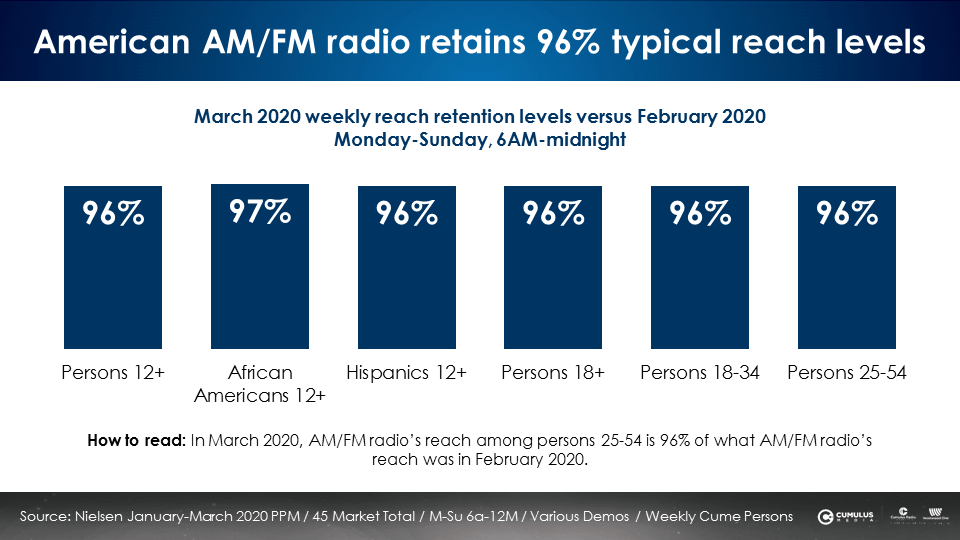
Middays, Monday-Friday, 10AM-3PM, had the strongest audience retention
March AQH audience retention from the prior month was strongest middays (Monday-Friday, 10AM-3PM) 92%, followed by nights (Monday-Friday, 7PM-midnight) 91%, weekends (Saturday-Sunday, 6AM-midnight) 91%, mornings (Monday-Friday, 6AM-10AM) 87%, and afternoons (Monday-Friday, 3PM-7PM) 88%.
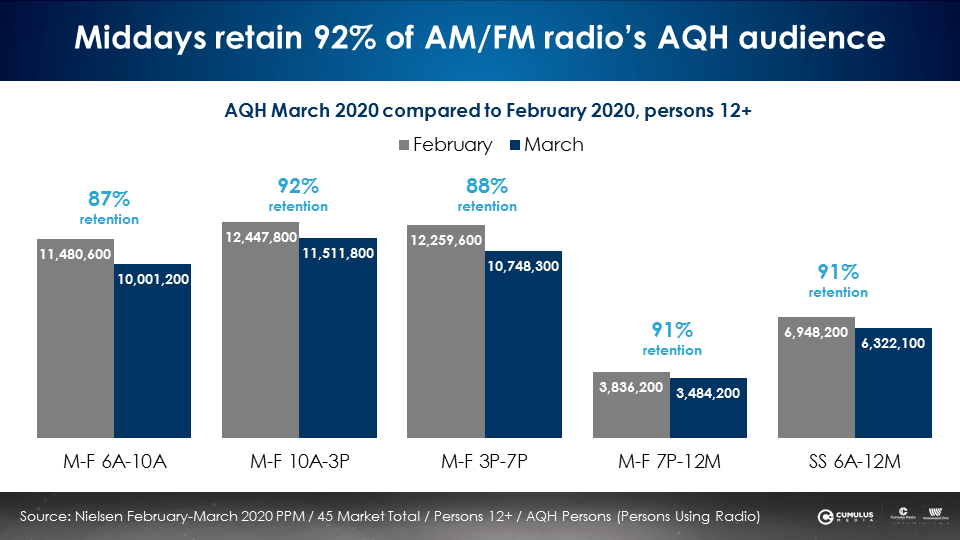
“Sheltering at home” means getting up later
People get out of bed later if they are sheltering at home. Katz Television reports a -19% drop in 5AM to 7AM TV viewing levels in April versus February for the early news daypart. Getting up later also impacts AM/FM radio’s morning drive.
Out-of-home AM/FM radio listening remains strong
Contrary to belief, out-of-home listening remains AM/FM radio’s largest source of audience. In a typical month, 74% of persons 18+ listening during Monday-Friday, 6AM-7PM is out of home. In March, 71% of listening was out of home.
Even in the last week of March, 62% of all U.S. AM/FM radio listening occurred away from home
While Nielsen’s trading currency is based on the full monthly data, they shared a week-by-week analysis of the proportion of listening that is occurring in home and out of home. During week four of the March survey, 62% of all listening occurred out of home and 38% occurred in home. March week four out-of-home levels are 1.63 times greater than in-home tuning.
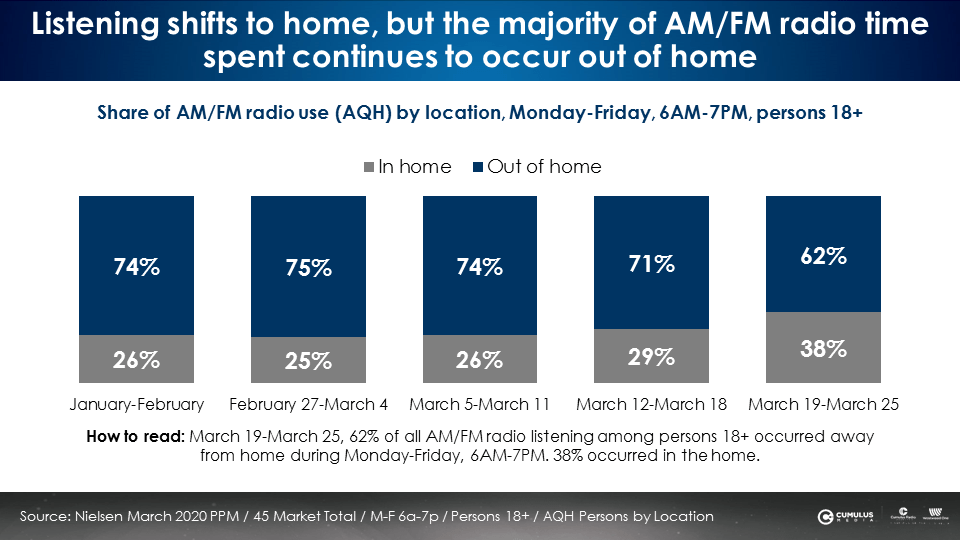
In-home AM/FM radio engagement increased in week four of March with a +29% gain in time spent versus week one
As Americans spend more time at home, AM/FM radio time spent is on the rise. Comparing weekly at-home time spent listening during March, Nielsen revealed a steady increase in persons 18+ time spent listening Monday-Friday, 6AM-7PM. In the last week of March, Americans spent 58 minutes a day listening to radio compared to 45 minutes a day in the first week of March, a +29% gain.
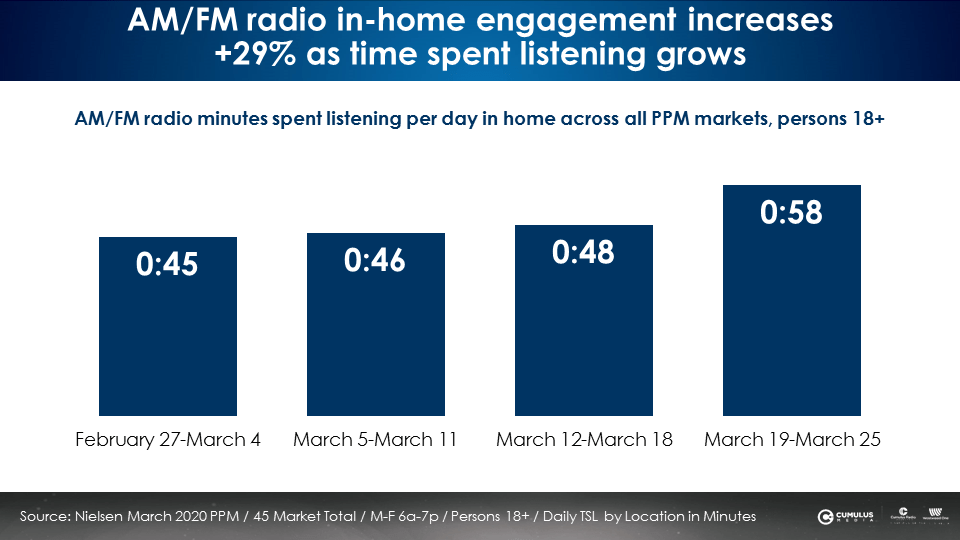
Listening to AM/FM radio broadcast streams at home rose throughout March
Nielsen analyzed encoded streams of AM/FM radio stations and found that compared to early March, streaming jumped significantly in week three and week four of the month.
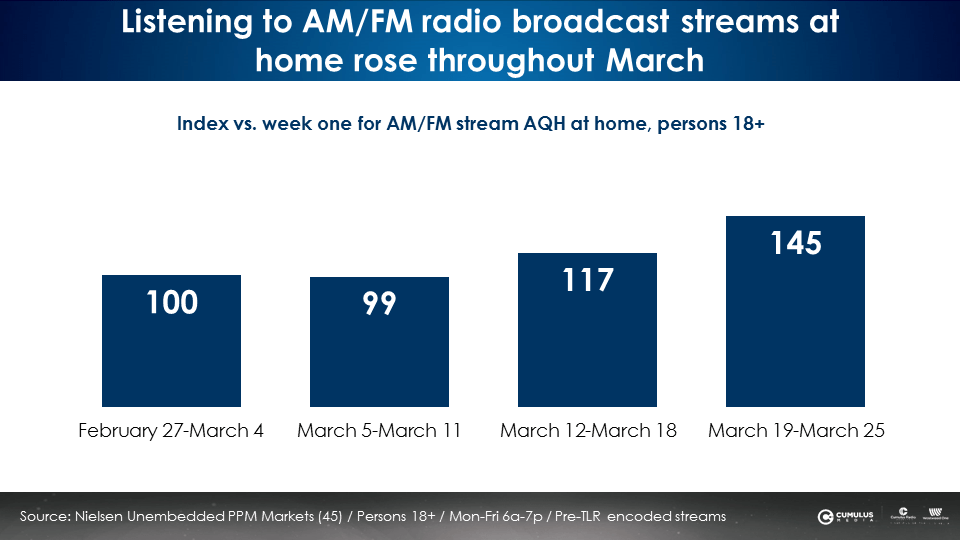
Essential workers and first responders listen more
Nielsen found March AM/FM radio time spent listening levels for drivers (2X the average), police (1.4X the average) and healthcare workers (1.2X the average) were very strong.
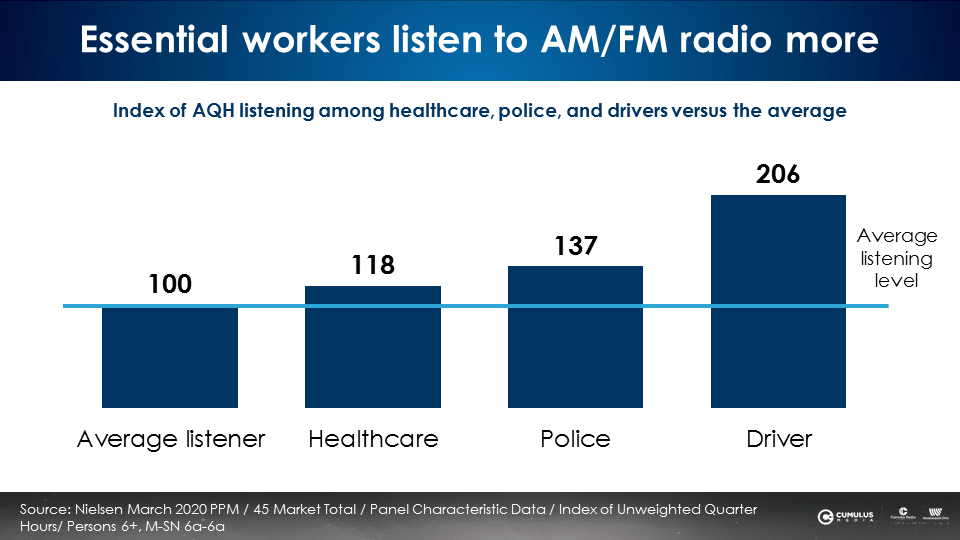
Marketers and agencies have to take the “me out of media”
Not all Americans are working from home just because agencies and advertisers are. A study conducted in late March by Hill Holliday found 37% of those in the workforce are working from home due to Coronavirus. Per Hill Holliday, 63% of American workers are still working outside the home.
In the marketing strategy book How Not To Plan: 66 Ways to Screw It Up, Les Binet and Sarah Carter remind agencies and brands, “We’re marketing and communication people, we’re different from the majority. In the US and UK, we’re less than 1% of the population. We tend to be younger. Richer. Better educated. Without kids. And we live in a handful of big cities. So it’s all too easy for us overlook how different our lifestyles and perceptions are from the people we talk to.”
You cannot generalize impact by market
Across Nielsen’s 45 PPM markets, there were varying levels of audience retention. There is a nine-point difference in AQH audience retention across all markets. San Diego saw the greatest month-over-month difference in AQH listening, retaining 86% of its February audience. Minneapolis had the smallest difference, retaining 95% of its February audience levels.
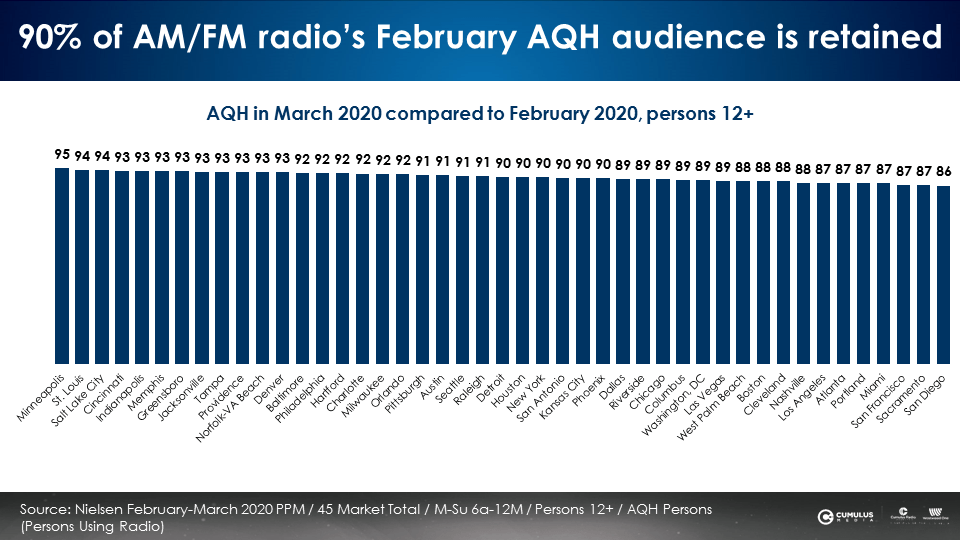
Interestingly, Seattle and New York City, two markets hit hard by the Coronavirus, were mid-pack in the market AQH retention market rankings.
Most format shares are remarkably consistent while News/Talk format stations gain share
Comparing shares from February to March, News/Talk increases 12.1% to 13.3%. All News stations increase 2.4% to 2.9%. The bigger story is the remarkable consistency of most American AM/FM radio formats.
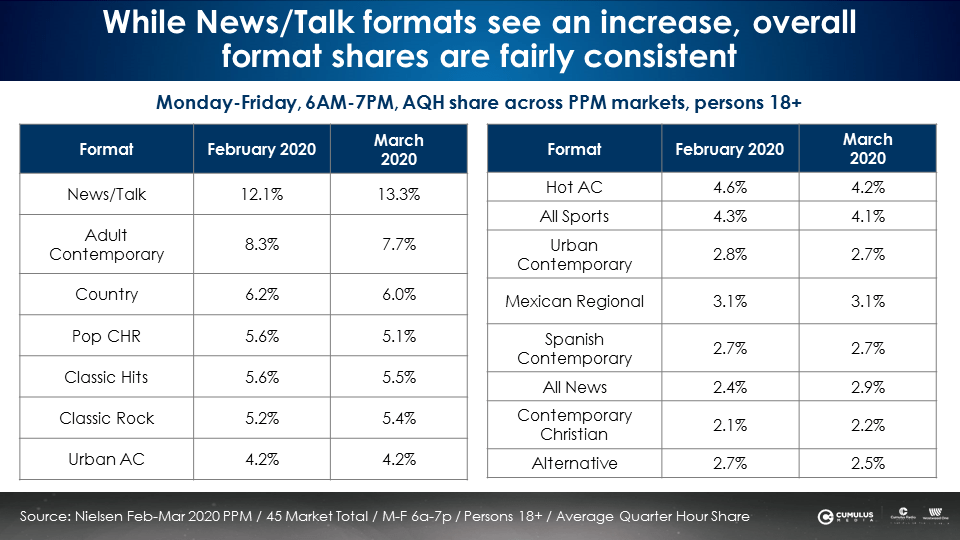 Key takeaways:
Key takeaways:
- AM/FM radio is alive and well and has retained the majority of the prior month’s audience: 90% of AQH and 96% of reach.
- The perception that no one is listening to AM/FM radio away from home during the pandemic is unfounded. Even in the fourth week of March, most AM/FM radio listening was out of home (62%) versus in home (38%).
- AM/FM radio format shares are remarkably consistent. News/Talk shares are up.
- Don’t generalize across markets. Each market reflects unique patterns of location of listening and audience retention.
Pierre Bouvard is Chief Insights Officer at CUMULUS MEDIA | Westwood One.
Contact the Insights team at CorpMarketing@westwoodone.com.